A title such as “the intelligent buyer’s guide to Burgundy” could be viewed as needlessly provocative, and yet it does convey a basic truth about many of those who buy wine, and Burgundy especially: in this realm, label drinkers are alive and well. Put any wine labelled “Armand Rousseau” or “Leroy” in front of anybody who knows a little something about Burgundy’s wines and more often than not the response to the wines is that they are just about the greatest thing since pre-sliced bread. And it’s almost so regardless of what the actual quality level of what is in the glass in front of them. Clearly, there are few more talented winemakers than the folks at those esteemed houses, so more often than not the wine poured will be just dandy. However, even in the presence of pure talent and greatness, there are distinguos to be made between the wines each winery produces. This is true of just about every wine producer out there: nobody excels with everything they try their hand at. This is important, because one piece of advice given to people looking for good buys in wine is to get anything made by a reputable producer. That works only up to a point. For example, as good as Rousseau’s wines are (some of the world’s absolutely greatest, and well worth breaking the bank on provided you have a bank to break), most truly knowledgeable wine experts also know that for, whatever reason, that winery’s Charmes-Chambertin and Mazy-Chambertin (they spell it so) wines are not quite as impressive as other grand cru bottlings the estate is really famous for. To be clear, they are still two great wines; but the dropoff in quality is driven home by the differences in bottle prices of each: Rousseau’s Chambertin and Chambertin Clos-de-Bèze are wildly more expensive, and more sought after, than the Charmes and the Mazy. So this is where it becomes interesting. Admittedly, the former pair wines will get you as close to imbibing liquid Nirvana as is humanly possible, but the latter pair is not exactly made up of dishwater-like liquid. It follows that the “intelligent” in the title refers to an intelligent/clever/crafty/knowing/smart way of looking at and buying wines and not with “intelligence” per se. Clearly, if you are in possession of a bank account the size of the GDP of a small country, you can afford all the Rousseau Chambertin you want, and in that case I totally envy your good fortune. However, unless you are really on the Poor Farm, buying Rousseau’s Charmes and Mazy might make more sense, allowing you to partake in the thrill of drinking what are two delicious wines without necessarily having to mortgage your home before doing so. But the question then arises: maybe there are Mazy and Charmes wines from other similarly gifted producers that might be more sensible buys? That is the question before us.
In fact, the tactic of buying everything that a famous, reputable, producer makes does not always work: just because you make an outstanding Clos de la Roche does not necessarily mean you will also make a similarly wonderful Clos Saint Denis. That depends on many different factors, such as where the vineyards are situated within each vineyard and the age of the vines, for example. Astute wine lovers and collectors know that as unbelievably wonderful Leroy’s wines are, it is really the top-end bottlings such as Chambertin and Musigny that are of a quality level quite unlike any other wine made in the world (yes, buying large quantities of those wines is a good way to go bankrupt, but if you’re going to ruin yourself, might as well go out in style, I guess). By contrast, there is really very little redeeming value in buying Leroy’s lower end wines such as the generic Beaune or even some generic premier cru bottlings: not that they are bad wines (they never are), but given how expensive they are, there are much better options on which to spend your hard-earned dollar, euro, real or Renminbi.
Therefore, “intelligent” buying in Burgundy involves having not just a deep knowledge about which are the region’s best producers, the best Appellations, and the best vintages, but also, and this is all-important and the real deal-breaker (at least in this context) knowing information such as where exactly in the premier or grand cru an estate owns vineyards. This allows you to have a better idea of just how qualitative the vineyard section from where the grapes are sourced really is. In other words, it’s easy to say “I’m buying an Échezeaux wine because it’s a famous grand cru and it’s a safe buy”: but is that really so? At 36.12 hectares (2018 data), Échezeaux is not an especially large cru (by contrast Barolo’s famous Bussia is 300 hectares) but it is still large enough that it is not all of the same quality level: not surprisingly, it has historically been subdivided in many different sections or climats all bearing a different name. However, all of Échezeaux’s wines (note that there are different accepted spellings of this cru) are allowed to be classified as grand cru wines; and yet, not all of Échezeaux is quite as grand as people would like you to believe. For example, the climat known as Echezéaux du Dessus has long been viewed as the cat’s meow; other Échezeaux’s climats also enjoy a similar lofty reputation, but not all. It cannot really surprise that slightly different wines are made from specific areas within the grand cru: given the noteworthy diversity in soil type between Échezeaux’s climats (mostly Bajocian marls with red alluvium, gravel and clay; furthermore, the soil is much richer and deeper upslope) and that their altitudes vary too (from 230 to slightly more than 300 meters above sea level) you’d expect the wines made with grapes from each to differ. Add to the equation another variable such as that there are many different individual producers farming these same sites, and so it is only logical that results will differ, meaning one grand cru wine might not be quite as good as that made from the same grand cru by a different producer. And if not better or worse, it will be, at the very least, a slightly different wine. For example, if you like big, textured, thick, mouthcoating wines (yes, they exist in Burgundy too), there’s little point in buying the outstanding wines of Hudelot-Noellat or Domaine Dujac, you’re better off trying the wines of someone like Dominique Laurent. All are very talented winemakers, but they have different winemaking signatures, reflected in the wines they make. So when it comes to wine, Burgundy or otherwise, it’s always also a case of different strokes for different folks.
Clearly, you might be asking yourself if there even is value to be found in Burgundy. After all, prices have been sent skyrocketing because of numerous factors, including the law of supply and demand, a series of recent weather-challenged vintages greatly reducing production volumes, and the increasing prestige and cult-status of many labels. All that being true, I would say that yes, there are values to be had. As mentioned previously, though one cannot accept it at face value for there are numerous pitfalls in doing so, the golden rule of choosing villages or less famous vineyards from producers with a proven track record of quality will work most of the time. Do you really need to mortgage your home in order to buy a producer’s Les Amouresues bottling when his/her Charmes or Les Baudes may be excellent wines too? Méo-Camuzet’s Fixin or J.F. Mugnier’s Chambolle-Musigny Clos de la Maréchale wines are nowhere near as famous (or expensive) as the best, most famous wines from those two estates, but they happen to be great Burgundian Pinot Noir wines too. Putting it another way, though not exactly cheap or inexpensive, those two less famous (read: desirable) wines will cost you one arm and one leg less than, for example, the Richebourg and Musigny wines respectively made by the same two producers (OK, OK: maybe even two arms and two legs less). Why is choosing the wine from a lesser Appellation but from a reputed estate a good idea? Easy (and logical): the world’s most famous producers are respected for good reason, as their unwavering commitment to quality and attention to detail (and even better if the estate has years of experience farming that specific site) are about as good a guarantee as you will ever have in wine that the bottle you are buying won’t turn out to be a dud. But once again, be very careful of accepting the “lesser appellation+ great producer = very good wine” equation at face value. It’s not always true: after all, there are reasons as to why the French wine system is largely based on terroir and its importance. Simply put, you can only do so much with some vineyards, the grapes of which just cannot give you as deep, as complex, and as concentrated a wine as those from a truly stellar site. Face it: no matter how talented and precise and hard-working you are, if they give you lemons, you’re still only going to make lemonade. You might make good, even very good or excellent lemonade, but it’s still and always going to be lemonade. The grand cru Clos de Vougeot is one of Burgundy’s most famous, and certainly its plots of vines closest to the Musigny grand cru are of stellar winemaking potential. But those down by the main road, on flatland clay-rich soil afflicted by drainage problems will never give a wine resembling the cru’s best, despite the whole slope being allowed to make wines labelled “grand cru”.
Last but not least, one of Burgundy’s most delicious wines, and always a great buy, is the little-known Bourgogne Passetoutgrains (I caution you, it’s a name of which exist myriad different spellings, official or not, with one, two and even three hyphens). By law, this wine has to be a blend of at least 15% Gamay and at least 30% Pinot Noir, with another 15% maximum that can be potentially be made up also by white grapes (Chardonnay, Pinot Gris and/or Pinot Blanc). The provision allowing for white grapes in the blend is a nod to the local Burgundian tradition of possibly including some white grapes when making red wines. In fact, most Bourgogne Passetoutgrains wines are blends of Gamay and Pinot Noir only, and in my experience the best are always roughly 50-50 blends of the two. The Pinot Noir brings freshness and fruitiness, the Gamay juiciness and charm, so the two actually work well together in a blend. The wines cost very little and are usually lip-smacking delicious: Taupenot-Merme makes an outstanding example, but there are many other Burgundian producers making excellent versions too. The smart wine buying money knows to look to this category for fun and satisfying wine drinking times. However, I caution readers that Bourgogne Passetoutgrains is a wines about which much that you will read about on countless websites is inherently wrong or difficult to understand clearly. The Bourgogne Passetoutgrains wine had to be, always, by law, a blend of Gamay and Pinot Noir, co-planted together and assembled as such. Jacky Rigaux, one of the biggest world experts on all matters Burgundy, states this confusing state of affairs is in part the result of the new Appellation “Coteaux Bourguignons” created in 2011 that ecompasses Appellations previously known as “Bourgogne Grand Ordinaire”, “Bourgogne Ordinaire” and even “Bourgogne Passetousgrains” (though there is no specific mention of this on any credible French website I looked at). According to Rigaux, officially these Appellations don’t exist as such anymore. Rigaux explains there is a degree a tolerance on the part of the INAO towards those who keep wishing to use the names of the old Appellations. Unfortuantely for French wine, what this means is that some of its labels are now less easy to understand than they were before, and the information they convey less than useful. Honestly, not a great look.
But it remains that a wine labeled “Bourgogne Passetoutgrains” should not be 100% Pinot Noir as is often reported. If and when the words “Pinot Noir” do appear on a label of Bourgogne Passetoutgrains, that’s most likely because European law allows the use of a grape variety’s name on the label provided that wine is made with at least 85% of that named variety: which is exactly the case of a Passetoutgrains wine made with 85% Pinot Noir and 15% Gamay, in which case one might choose to add “Pinot Noir” to the name Bourgogne Passetoutgrains. Adding “Pinot Noir” on a label might help the wine sell better, given that Pinot Noir is a magical name sales-wise these days, but if I were a French grape/wine legislator, I would not allow such gimmicky shananigans to happen. Passetoutgrains is a historic, important name in Burgundy wine and it deserves the dignity of its origin being well-communicated and clearly understood, even in the eventual face of a generic, and to my way of thinking ill-devised, creation of a “Coteaux Bourguignons” category of wines.
Relative to white Burgundy wines, there is no doubt Chablis often offers exceptional value, though the wines of the area’s best producers have also become hideously expensive over the last decade or so. Better then to look at less fashionable Burgundian wine areas, for example Saint-Véran and Pouilly-Vinzelles. Not far removed from the much more famous Pouilly-Fuissé Appellation, the wines of both Saint-Véran and Pouilly-Vinzelles are often much better buys than those of Pouilly-Fuissé. Clearly, it’s not always so, and to generalize randomly is asking for trouble: there are many outstanding Pouilly-Fuissé bottlings to be had that are not as expensive as those of the best-known wineries in the area and that are still relatively good buys. Keep in mind however that a gifted individual can make much better Saint-Véran wines than someone with just as good vineyards in Pouilly-Fuissé but who may not be blessed with similar levels of talent or inclined to expend similar amounts of elbow grease in order to make the best wines possible.
In ultimate analysis, concepts such as “good buys”, “value” and “intelligent buying” are imbued with an unavoidable degree of subjectivity: These are all, fatefully, very relative propositions. What is a good buy for me may not be so for you and even less so for a third party. But for sure, no matter what your personal definitions of “good value” may be, there are many wonderful wines to be had in Burgundy that will not bankrupt you. Yes, such wines will neither allow you to experience life-defining moments in the company of liquid paradise such as the truly expensive offerings may do, nor will they get you everlasting bragging rights with the friends you were to share them with. But “good-buy wines” will allow you to drink well. Even very well. And importantly in this day and age of increasingly limited economic means for the majority of the population, to not have to spend the rest of one’s life sleeping under bridges or never going on vacation again.
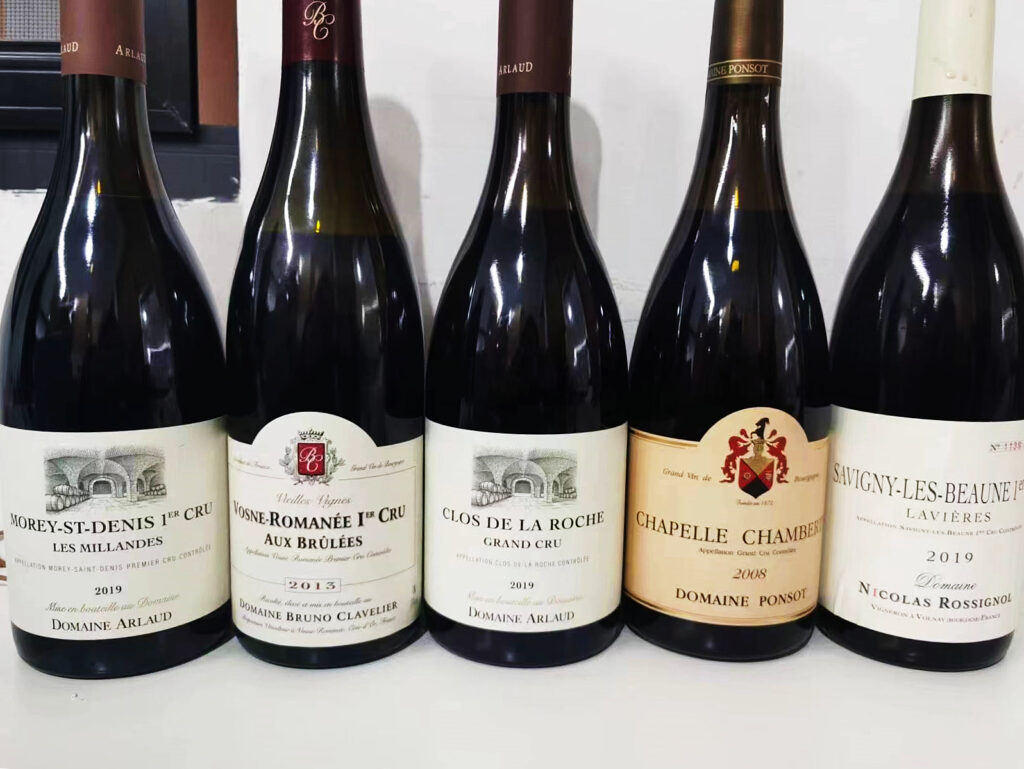
The wines in this tasting
Domaine Arlaud.
Simply put, this is one of the most exciting domaines in all of Burgundy today, making remarkably juicy but very concentrated, compellingly sweet and brilliantly delineated wines that share more than just a passing resemblance to those of say Emmanuel Rouget. To be crystal-clear, the Les Millandes Premeir Cru reviewed in this article is one of my ten best wine buys of the year.
Domaine Arlaud 2019 Morey-St-Denis 1er Cru Les Millandes 94
Vivid deep red. Very pretty, highly perfumed aromas of decadently ripe red cherry, minerals, sweet spices and violet. Then suave and juicy, with a creamy, meaty texture to the superripe red fruit flavours but at the same time light on its feet with a penetrating quality that really extends the flavours on the long finish. Absolutely irresistible, this is excellent, and is also a great buy: you really can’t ask for anything more. Even better, it’s sultry meaty-creamy texture is not just a signature of Domaine Arlaud but specifically of the Les Millandes Premier Cru; real Burgundy insiders know that Arlaud’s portion of this vineyard is one of the best, given that the winery’s vines are planted on both soil types that characterize Les Millandes, the colluvial gravel section as well as that made up of richer clay. In short, you can’t get a much better expression of this cru in your glass. And as good as this wine is right now, it will age very well too, but it’s so lusciously delicious already now that I doubt any bottles will make it further than another five years from today. Last but not least, readers should note this wine has been underrated by many a swirling pundit so you can find and latch on to bottles at a fair price. Do yourself a favour and start looking to get some while the getting’s good: you can thank me later. Drinking window: 2025-2030.
Domaine Arlaud 2019 Clos de la Roche Grand Cru 97
Good full deep red. More reticent and brooding on the nose than the Les Millandes from the same vintage, and also less perfumed but more powerful than Arlaud’s Clos Saint Denis wine (as you’d expect), offering aromas of ripe raspberry, wild herbs, smoky minerals and vanilla lifted by violet and Oriental spice nuances. Sweet and dense but at the same time youthfully tight, boasting terrific sweet spicy lift to the beefy, very Morey-like, dark berry and black cherry flavours. Displays the sexy early notes of all Arlaud Pinot Noir bottlings that are typical of this estate’s wines, but that’s not just due to the use of whole bunches: there’s a lot more going on here and therein lies at least part of Arlaud’s bravura and secret. Finishes silky and long, with outstanding building energy and remarkably noble tannins. This is more than “just” a wine, for it offers also a learning opportunity as to what the words grand cru really mean, or should: wines of great power and concentration, but at the same time remarkably elegant and lifted. You don’t need to be a wine expert to grasp that this is just a monumental wine. It’s an absolute knockout of a red wine, but is still just an infant. Don’t even think of opening it for another six to seven years or risk getting charged for crimes against humanity. Drinking window: 2029-2038.
Bouchard Père et Fils.
Bouchard is a highly dependable, larger Burgundy producer that makes many outstanding wines at all price points, and that usually represent good buys in their price category (Louis Jadot and Joseph Drouhin would be others). Keep in mind that Bouchard’s white wines a are often just as good as their reds.
Bouchard Père et Fils 2006 Meursault 1er Cru Genevrières 92
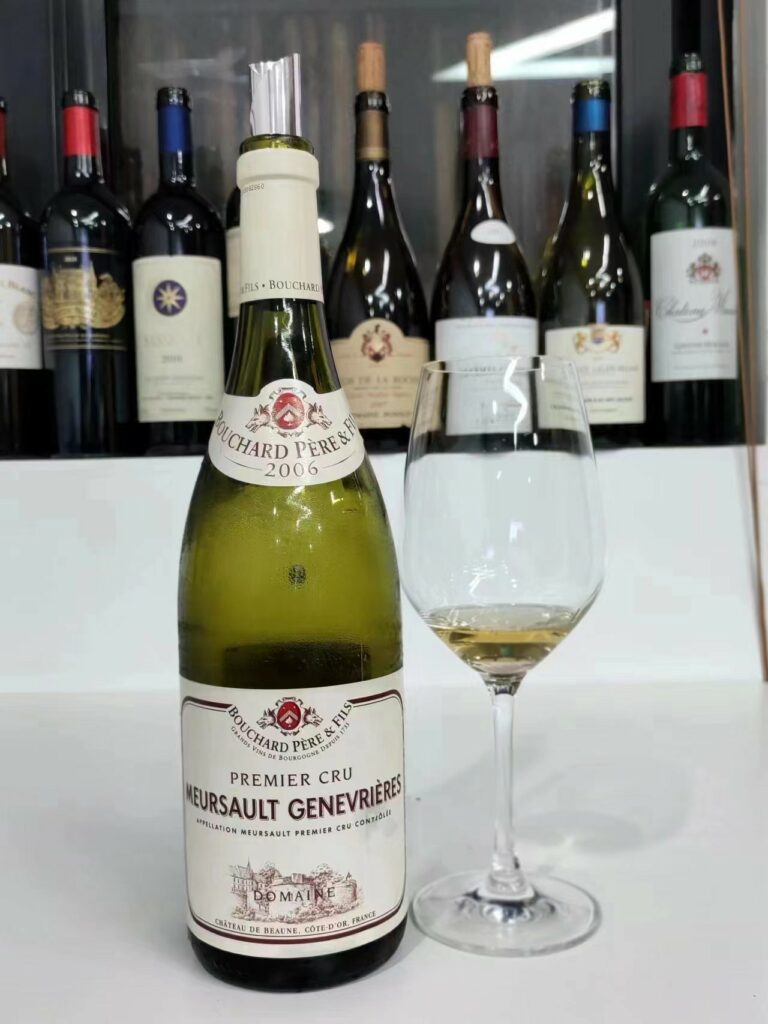
Medium golden-yellow colour. Aromas and flavours of very ripe tropical fruit and butter are complicated by hints of sweet spices and almonds. Closes long with increasing floral lift and citrussy juiciness. Very Meursault-like, even though I normally expect bottlings form the Genevrières cru to be a little more reticent than this one is. Then again, another bottle of this wine tasted a month earlier was more lifted and fresh; the bottle I am reviewing here was showing a modicum of incipient oxidation. From what is arguably the best Meursault premier cru right after Perrières (I can make a pretty good case, and I’m in good company, that both should really be grand crus), Bouchard always delivers a pretty wine. And given what the Meursault wines of some other very famous producers now cost, this then becomes an absolute steal. Drinking window: 2023 -2025.
Domaine Bruno Clavelier.
Clavelier is one of the biggest terroir experts in Burgundy, which is saying something given that just about every producer there places terroir, importance-wise, right up there with their country and their mother. A visit to this tiny estate will reward you not just with many lovely, dainty wines to taste, but also a lesson in geology the likes of which you have never had before. By the time you leave the building, you will have looked at as many different rocks as the wines you will have tasted, and therein lies part of the magic of the Clavelier experience. One note of caution: Clavelier’s wines are very understated and they don’t “wow” anybody with gobs of fruit or sexy sultry notes of spices and flowers: rather they are minimalist affairs (and the wines form recent vintages have struck me as being even more so, which may not always be a plus, when and if taken to extreme levels) that are quite silent in their youth and that require time and aeration to show all they have to offer, but which is usually plenty.
Domaine Bruno Clavelier 2012 Vosne-Romanée 1er Cru Aux Brulées 92
Deep ruby-red. Initially reticent, highly reduced, aromas of plums, red berries, herbs, minerals and violet open slowly with aeration. Then similar but slightly more candied flavours to the aromas, with a slightly high-strung, austere quality; tastes both sharp and piercing with a still (at over ten years out!) and requires plenty of aeration to smoothen out. The clean aftertaste is very pure and light on its feet, not to mention very long. A perfect example of a Clavelier drinking experience, this is a beautiful wine that needs to be opened long before you plan to drink in order to enjoy it at its fullest. Open three hours ahead of serving. Drinking window: 2023-2030.
Domaine Fontaine-Gagnard.
The family has been involved in vines and wines for hundreds of years, thought the winery as such was officially founded only in 1985. Its vineyards are mostly located around Chassagne-Montrachet, though it also boasts holdings in Volnay and Pommard. For my money, this is one of the best domaines in Burgundy: you will rarely get a bad bottle from Fontaine-Gagnard, and if you stop to consider for a moment the almost insane prices fetched today by many Burgundy wines, that is a real badge of honour. The white wine from the monopole premier cru Clos Des Murées is a case in point, punching way above its weight class.
Domaine Fontaine-Gagnard 2019 Chassagne-Montrachet 1er Cru Clos Des Murées Monopole 92+
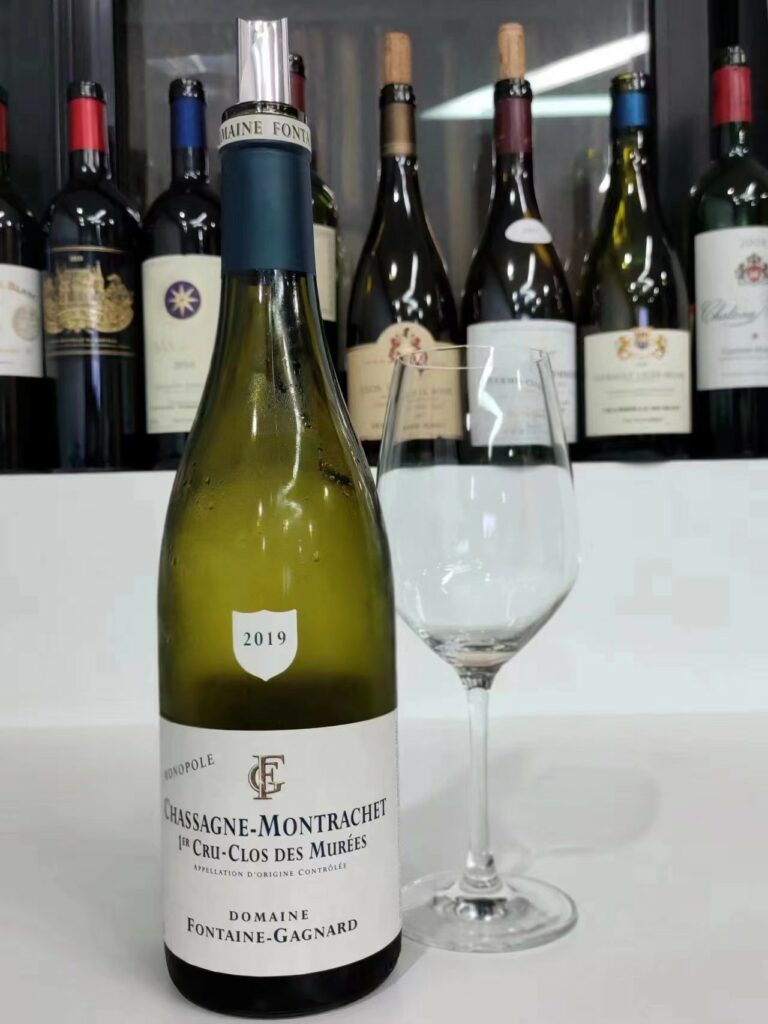
Bright straw yellow with golden tinges. Deep if still slightly closed aromas of pit fruit, yellow apple, tangerine, stem ginger, pear and grilled nuts. Then nicely balanced with rich, ripe mineral- and leesy-accented orchard fruit flavours that offer lovely delineation and plenty of juiciness. The aftertaste is very long and builds complexity with aeration. Much too young to appreciate fully now, I suggest giving this three-to-five years in a good cellar so as to drink it at its best though your certainly won’t be disappointed if you crack a bottle open today. Is there a more dependable name in Burgundy wine circles than that of Fontaine-Gagnard? Not many. The estate never seems to make a bad wine at all price points and this wine is a case in point: no, the Clos Des Murées won’t make you think you’re drinking the winery’s Montrachet, because the texture, concentration, and complexity are at another level, but for the money, this is a beauty. Drinking window: 2026-2030.
Domaine Frantz Chagnoleau.
I’ll let you in on a little secret: Burgundy insiders refer to the wines of this Domaine as Coche-Dury-like, so that tells you all you need to know right there. More importantly, and more practical too, is that Chagnoleau avoids over-ripeness in his grapes, a problem that still plagues many a Macon producer; and the fact he largely avoids batonnage and new oak use also contributes to the making of pristine, nicely-delineated wines of great purity, finesse and delicacy.
Domaine Frantz Chagnoleau 2020 St. Veran Blanc Fournaise 91
Luminous straw yellow. Reductive, minerally and very pretty, delicate floral and waxy notes to bright orchard (nectarine, green apple) and fresh citrus (lime mostly) aromas and flavours. Nicely glyceral in the mouth, but harmonious acidity keeps this dancing on your palate and through onto the sufficiently long finish that features inviting accents of yeasty fresh warm baked bread and hazelnut and repeating note of lime blossom. A very delicate, tonically fresh wine that speaks of the thinner top soil and relatively high-altitude terroir. A knockout Chardonnay wine for the money that is neither over the top nor neutral and offers plenty of flavour for your hard-earned currency. Very well done: this tastes like it costs a whole bunch more. Made with grapes grown in a very small plot (about 0.25 hectares) at 300 meters above sea level in the area of Prissé, on thin iron oxide-rich red clays over limestone. Drinking window: 2023-2028.
Domaine Nicolas Rossignol.
Nicolas Rossignol is a fifth-generation winemaker who started out in 1994 vinifying at the Domaine Rossignol-Jeanniard, and who then went on to create his namesake domaine in 1997. In 2001, the two were fused together into one entity such that this winery now makes wines from a bevy of different Burgundian Appellations, from Volnay to Pernand-Vergelesses. The Savigny plots of land were added later (not just in the premier cru Lavière but also Fourneaux) coming in to the fold in 2005. All the Nicolas Rossignol wines are characterized by sexy ripe fruit and brad showy flavours but are always endowed with a good amount of elegance.
Domaine Nicolas Rossignol 2019 Savigny-Les-Beaune 1er Cru Lavière 93
Bright medium-deep red-ruby. Multidimensional, slightly high-toned but sultry-sexy aromas and flavours of sappy red cherry, blueberry reduction, allspice, violet, smoke and blood orange. Silky and creamy in an old-vine way yet boasts lovely lift too thanks to powerful underlying minerality and inner-mouth perfume. A very dense Savigny wine that really saturates the mouth with perfume and the extremely long, mouth-staining finish stains redolent of cinnamon, savory herbs, truffles and crushed stone. Quite broad and already forward for its young age, this is maybe not the most nuanced red Burgundy you’ll ever drink, but is so irresistibly delicious that I doubt a bottle will ever make it to the end of even just one course at dinner, so be prepared to have another bottle ready to go too. Drinking window: 2023-2030.
Domaine Ponsot.
Technical director Alexander Abel has been making outstanding wines at this ultra-famous estate for some time now. And while the top-end bottlings are certainly expensive, they also represent the best or at no worst, top three quality wines in each Appellation. Some of the estate’s less expensive offerings are spectacular too: insiders know that the Clos des Monts Luisants, 100% Aligoté and in fact the world’s only Aligoté wine that is a premier cru, is about as good as a white wine from Burgundy at that price level as there can be found.
Domaine Ponsot 2008 Chapelle-Chambertin Grand Cru 94
Luminous good full red. Initially broad and reticent, but opens with air in the glass to offer aromatic, exotically spicy, decadently ripe red cherry fruit, mineral, smoky oak and floral aromas and flavours. The long, broad, suavely tactile finish is nicely chiseled, featuring minerally savoury nuances that linger nicely. Though Ponsot has always been viewed as perhaps offering the best expression of Clos de la Roche wines around, the fact is the estate is also one of the best interpreters of Chapelle’s terroir. So while this is not an inexpensive wine by any stretch of the imagination, it is such a benchmark expression of the site that it is a good buy in the sense that it is well-worth the splurge. (Note that the 2009 Chapelle Chambertin from this winery is an even better wine, that I have scored repeatedly 97 in the past.) Drinking window: 2023-2028.
Domaine Robert Sirugue.
Many people “in the know” will tell you Robert Sirugue is a very good address to go to when looking for good value Burgundy wines. To that I would only add “especially the entry-level reds, more so than the premier crus, for example”. But this winery also makes a good if uncomplicated Bourgogne Aligoté wine that is well worth a look. While Burgundy is habitually linked to Chardonnay in the minds of consumers, the simple fact of the matter is that today, perhaps partly because of climate change, Burgundy’s Aligoté wines are often much better than its Chardonnay wines sold at the same price point. And some higher end Aligoté wines, such as those of Bouzeron (for all intents and purposes, a grand cru quality area for the variety) are as good if not better than many famous Burgundian Chardonnay premier crus wines. The Bourgogne Passetoutgrains wines are usually good too.
Robert Sirugue 2020 Bourgogne Aligoté 90
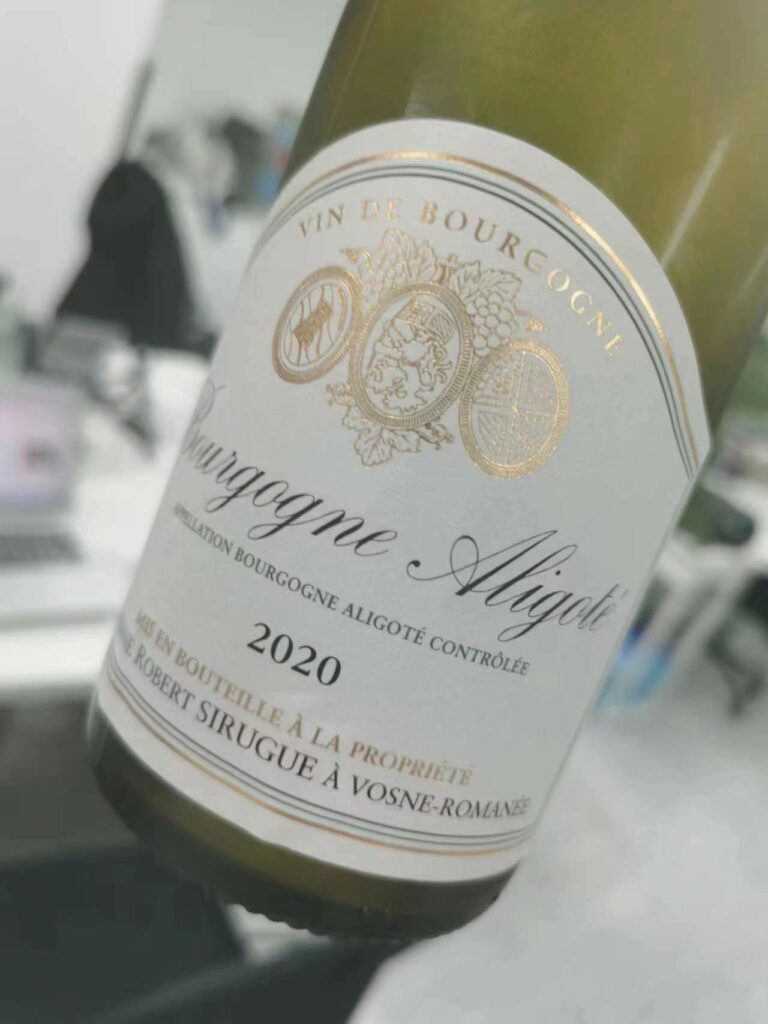
Bright straw-yellow with green highlights. Pure, high-pitched aromas of lemon, lime, minerals and ginger are not especially concentrated but are very pure. Then juicy and nicely intense with easygoing, uncomplicated flavours of lime and herbs. Finishes with sneaky persistence and good mineral lift. Another really good 2020 Burgundy, made with grapes coming from just below the Clos de Vougeot and from Gilly-lès-Cîteaux. Drinking window: 2023-2025.
Robert Sirugue 2020 Pinot Noir Bourgogne Passetoutgrains 89
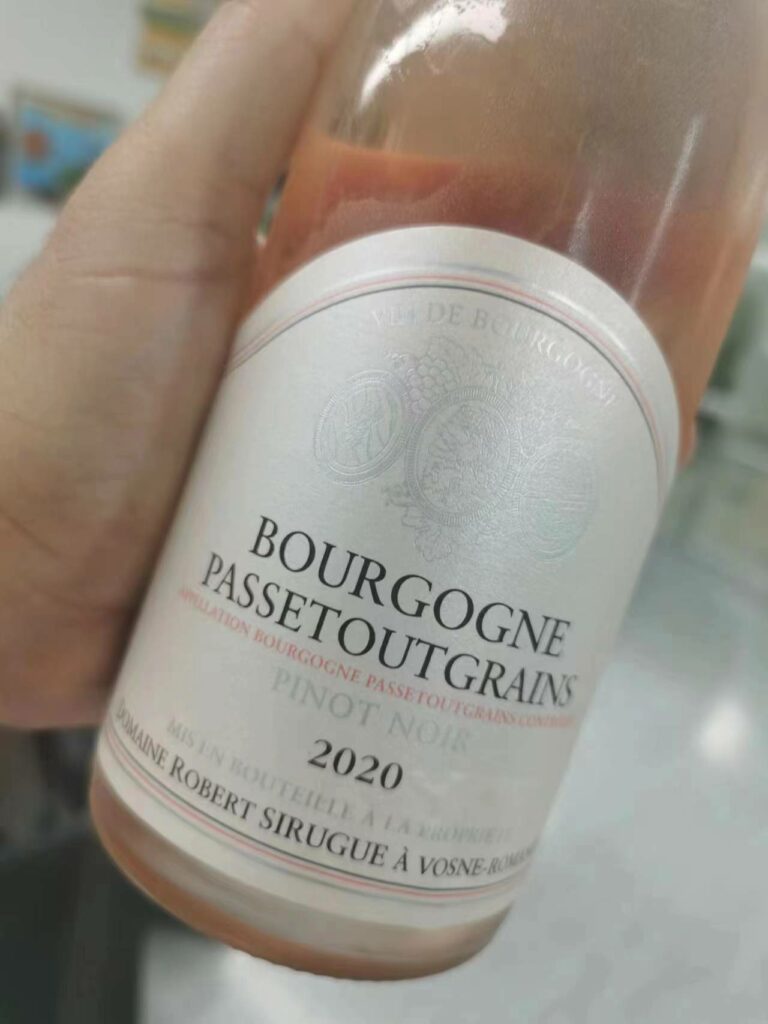
Good pale pink-red. Floral aromas of musky raspberry, red plum, coffee and licorice. Fresh, juicy and seamless, offering good breadth and flesh and a tight core of minerally red fruit and musky herb flavours. The nicely sweet finish shows an herbal nuance and very good length. This is a pink Burgundy wine at its delicious best. The grapes come from the area of Gilly-lès-Cîteaux. I don’t know why the label carries the words “Pinot Noir” prominently displayed on the front label (I called the domaine but nobody picked up the phone), given that Bourgogne Passetoutgrains wines have to be, by law, at least 15% Gamay (the production guidelines of Passetoutgrains demand a 30% minimum of Pinot Noir and a 15% minimum of Gamay; actually, up to 15% of Chardonnay, Pinot Gris and/or Pinot Blanc are also allowed in a Passetoutgrains wine provided they are co-planted in the vineyards). This much was always the case, but apparently things are not as cut and dried anymore, ever since the creation of the Coteaux Bourguignons wine category back in 2011, so go figure. The estate also makes a Rosé Passetoutgrains wine. Drinking window: 2023-2025.
Domaine Taupenot-Merme.
Though officially founded in 1963 with the marriage Denise Merme and Jean Taupenot, the families trace their roots in viticulture back to the seventeenth century. The Merme family owned vineyards in Morey-Saint-Denis, the Taupenots in Saint-Romain and the union by marriage has led to the creation of winery boasting ownership of more than thirteen hectares in some of Burgundy’s best vineyard sites. Now led by the ninth-generation sibling duo of Romain and Virginie, it is my not so humble view that there are fewer better Burgundian domaines at delivering similar high quality at reasonable prices and I could have picked any number of wines from Tasupenot-Merme to make my case. For example, both the winery’s very high-end Mazoyères-Chambertin and Charmes-Chambertin are exceptional buys, given just how good the wines are (in a fresh richly fruity and sweet style not unlike that of Henri Jayer once or Emanuel Rouget today) and what they cost per bottle in comparison to other Burgundian wine names. But the entry-level Bourgogne Passsetoutgrains is also a knockout.
Taupenot-Merme 2020 Bourgogne Passetoutgrains 91
Deep red-ruby. Effusively rich and ripe but fresh aromas and flavours of red cherry and raspberry nectar are complicated by cinnamon and violet. Bright and juicy in the mouth, but with compelling sweetness of fruit and an invitingly creamy texture, this very pretty red wine closes long and lively. It is my experience that this wine actually ages much better than one might anticipate, so don’t worry about keeping a few bottles around for four to five years after the vintage. This is a fifty-fifty blend of Gamay and Pinot Noir, picked from a 0.9 hectare plot planted back in 1986, is just plain delicious. Drinking window: 2023-2026.

 English
English
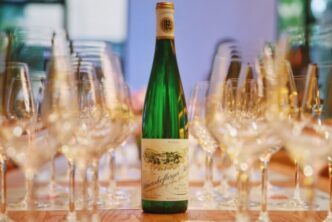
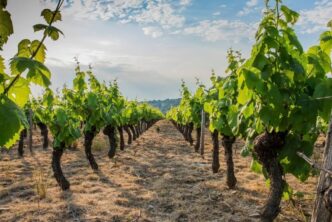
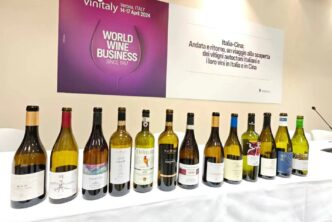

Ian–wonderful selection of Burgundies. The next report should perhaps be called; “How to not go broke buying Burgundy”. Let us all hope that Arlaud’s superb wines
remain relatively affordable.
Hey Bob, great idea: now if you’d like to be the one to write that, don’t hold back please! 🙂
All kidding aside, we have part 2 pf this article with lots more great wine buys coming up in a couple of weeks, look for it! Ian